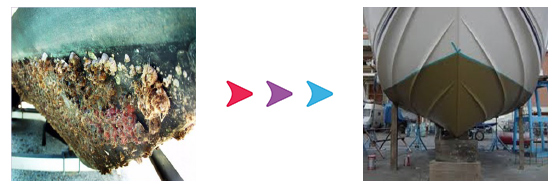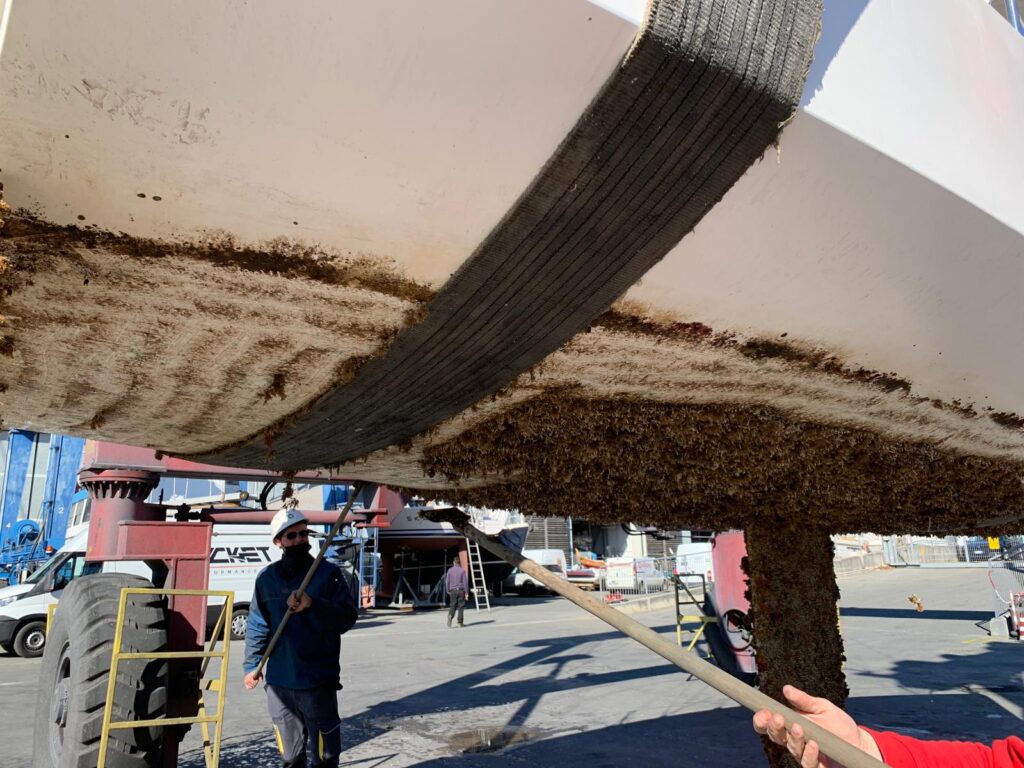Antifouling Paint
Highly efficient biocidal coatings
Problem: Fouling (biological crust) developed on surfaces immersed in water has several problems both economical and environmental.
From an economic point of view, it involves high costs to prevent the presence of fouling on the hull of ships, boats, etc.
It has been estimated that the global costs for anti-fouling treatment are in the order of 6.5 billion US dollars per year.

State of the Art: The use of products that prevent the growth of fouling always is dangerous for the environment.
The “biocides” or antibacterial agent introduced in the composition of the antifouling paints are highly toxic compounds that are released in the sea. Furthermore, because the fouling is made from different organisms (bacteria, algae, barnacles, etc), biocides contained in antifouling paints must necessarily have a broad spectrum of action and therefore they constitute a danger to the entire aquatic ecosystem.
Moreover, biocides are poorly biodegradable and therefore remain in marine sediments for a long time, creating a potential danger to the aquatic environment.
Over the years many of the most used and effective biocides have been banned, so the search for innovative solutions for antifouling paints is quite welcome.
Solution: The primary purpose is to obtain an highly efficient product that does not release toxic products into the environment. Crossing can permanently graft the biocidal product to the pain/coating structure, maintaining the biocide effect for all coating life.
Experiments: The experimentation of Crossing’s innovative antifouling treatment continues with excellent results. We show in the picture the boat treated only with our product after six months of standing in a marine environment without ever having been moved. These are the most unfavourable conditions. As you can see, no dog teeth have formed and the algae can be removed by hand or with a normal high-pressure cleaner. Testing continues in the marine environment with improved formulations.


